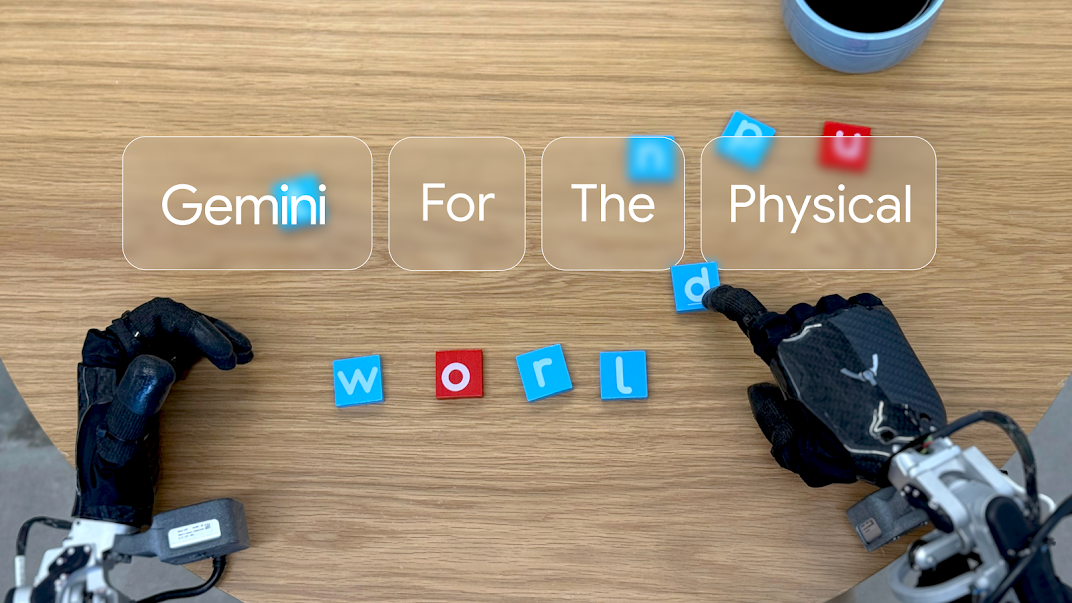
June 13, 2025
Gemini Robotics-ER: Enhancing Robotic Applications with AI
Gemini Robotics-ER: Enhancing Robotic Applications with AI
How can robots make real-time decisions, cope with their surroundings, and complete difficult jobs precisely? If you love robots or AI, you are about to enter a future where advanced artificial intelligence makes robotics smarter, quicker, and more efficient. Welcome to Gemini Robotics-ER, a robotics superhero. This article will explain its capabilities and how to incorporate this powerhouse into robotic systems, with code examples.
Key Features of Gemini Robotics-ER
Gemini Robotics-ER is an AI-powered robotics system that thinks, learns, and adapts. AI-powered decision-making is notable. Robots now analyze data, make smart decisions, and adjust in real time. Imagine a robot that can avoid obstacles and navigate a labyrinth in seconds. We are discussing that AI.
Gemini Robotics-ER integrates with several sensors and perception systems, another benefit. From cameras to LIDAR to depth sensors, this platform lets robots receive and understand sensory input to intelligently explore and communicate. Processing real-time data and acting on it transforms autonomous systems. Real-time processing lets your robot respond instantly to its surroundings. Remember these robots' complex control systems that keep them stable and trustworthy in complicated or uncertain conditions.
Setting Up Gemini Robotics-ER in Your Robotic System
How do you implement this fantastic technology? Install the Gemini Robotics-ER library in your development environment. It is not as complicated as it sounds! Make sure you have the proper hardware and software.
Consider sensors for hardware. Cameras, LIDAR, ultrasonic sensors—anything that feeds your system data. These examples need Python, so install it.
Install the Gemini Robotics-ER library first. Run this terminal command to achieve this easily:
pip install gemini-robotics-erAfter installation, you may integrate it into your system. Like adding a new tool to your toolbox, you can construct wonderful things!
Integrating Gemini Robotics-ER with Your Robotic System
After installing the library, connect sensors to Gemini Robotics-ER. Imagine you want to integrate a camera sensor. This code snippet shows you how to set it up simply:
from gemini_robotics import Sensors, Camera
# Connect to the camera sensor
sensor = Sensors.connect("camera", "/dev/video0")
# Initialize the camera
camera = Camera(sensor)
# Capture an image from the camera
image = camera.capture_image()
print("Captured Image:", image)
With this configuration, you can start sensor data collection. Let's apply AI for path planning, essential in robotics navigation. We will train the robot to avoid obstacles while planning its path from start to finish.
from gemini_robotics import AI, PathPlanner
# Initialize AI for path planning
ai_system = AI.init_system()
path_planner = PathPlanner(ai_system)
# Define start and goal positions
start = (0, 0)
goal = (5, 5)
# Calculate the optimal path
path = path_planner.calculate_path(start, goal)
print("Calculated Path:", path)Gemini Robotics-ER lets your robot plan its path with a few lines of code. It is like giving your robot a brain to help it navigate!
Real-Time Decision Making with AI
Gemini Robotics-ER's real-time robot decision-making is cool. This is about adjusting to environmental changes, not simply following instructions. A robot must promptly determine whether to proceed ahead, turn left, or change its speed when it reaches a hurdle.
This code section shows how the AI system uses sensor data to make decisions:
from gemini_robotics import AI, DecisionMaker
# Initialize the AI and decision-making system
ai_system = AI.init_system()
decision_maker = DecisionMaker(ai_system)
# Simulate sensor data collection
sensor_data = sensor.get_data()
# Use the decision maker to choose the next action
decision = decision_maker.make_decision(sensor_data)
if decision == "move_forward":
robot.move_forward()
elif decision == "turn_left":
robot.turn_left()This robot continually evaluates its environment using sensor data and makes the best choice. It perfectly shows how AI and robotics may generate autonomous systems.
Advanced Capabilities: Machine Learning in Gemini Robotics-ER
What if you wish to go ahead? Gemini Robotics-ER integrates machine learning with robotics. Gemini Robotics-ER can help you teach your robot to detect objects, predict results, or optimize behavior.
This example shows how to train a platform-based AI model to enhance robot performance. This is how you would teach your robot to navigate better using sensor data:
from gemini_robotics import AI, ModelTrainer
# Initialize AI and model trainer
ai_system = AI.init_system()
model_trainer = ModelTrainer(ai_system)
# Collect sensor data for training
training_data = sensor.collect_data()
# Train a model on the collected data
trained_model = model_trainer.train(training_data)
print("Model Trained Successfully")Your robot learns from real-world sensor data and improves performance by training a model. Giving your robot the capacity to learn from experience is a futuristic idea fulfilled.
Conclusion
AI-enabled robots is the future. Gemini Robotics-ER builds intelligent systems that think, learn, and evolve. This platform offers route planning, machine learning, and real-time decision-making. Best part? Starting with a few lines of code is easy.
As robotics and AI evolve, systems like Gemini Robotics-ER will power the next generation of intelligent devices. If you are ready to elevate your robotics projects, why not try Gemini Robotics-ER?
468 views
